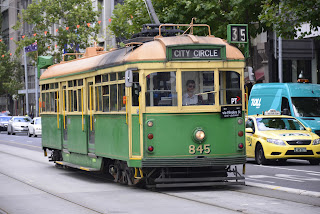For the greater part of the story of Armchair, it was led by Simon and Ann Newman - very old friends of mine who were smart and brave enough to keep going through tough economic times by continually shifting the balance of their operations, whilst maximising the benefits of long and trustworthy long-term relationships with both suppliers and customers. Those relationships, described in detail in the book, helped enormously towards the success of the company.
Continued attention to quality in a consistent way was a hallmark of Armchair. It never gave way to a snazzy livery or joined the legions of operators buying even more outrageous foreign coaches for a market which was always sensitive to price. Foreseeing lean times in coaching it diversified into buses and went on to capture new areas of coaching business both with the cruise market and for commuters. I had a small part to play in the latter, which is also acknowledged in the book.
John Watts goes into significant detail quoting extensively from Simon's personal archive of diaries as well as official material. His style is very chatty - one feels like one is being read a story. What sets this book apart is a refreshing inclusion of the names and personalities which are part of the Armchair story, rather than a catalogue of dates and vehicles usually found in transport books. This one talks extensively about the people and how they were involved. How chance encounters with people at airports delivered new business; how Simon's extensive networking through CPT (where he was President 1988-89) and elsewhere was rewarded; and so on, all painting a colourful and enjoyable picture of the story of Armchair.
No one in the industry would have begrudged Simon and Ann's retirement after a successful trade sale. The book describes the heartache not only over the sale itself but the harsh change of policy by the new owners which led to the dismantling of the entire coach operation, the disbanding of the team and the disappearance of the familiar Armchair name and the distinctive orange vehicles.
So whilst Simon and Ann were able to realise their investment and enjoy their retirement, the book expresses the sadness as to what became of the business they had nursed and cherished for so many years and at great personal cost.
As with all authoritative books, once it is in print it will be regarded as definitive. The author does go off into one or two areas of fantasy which could be mistaken for fact. It is, for example, an interesting notion that Ian Fleming gave James Bond his '007' codename because he saw East Kent coaches on route 007 go through his home village of Bridge showing that number. However historians will know that this route number was only adopted years after Fleming's death so cannot possibly be true.
Nevertheless, I did enjoy reading the book. Armchair is a piece of London transport history.
Available from John W Watts, 47 Woodgate Road, Liskeard, Cornwall, PL14 6ET
bertybus@freenetname.co.uk
£20 including postage


















